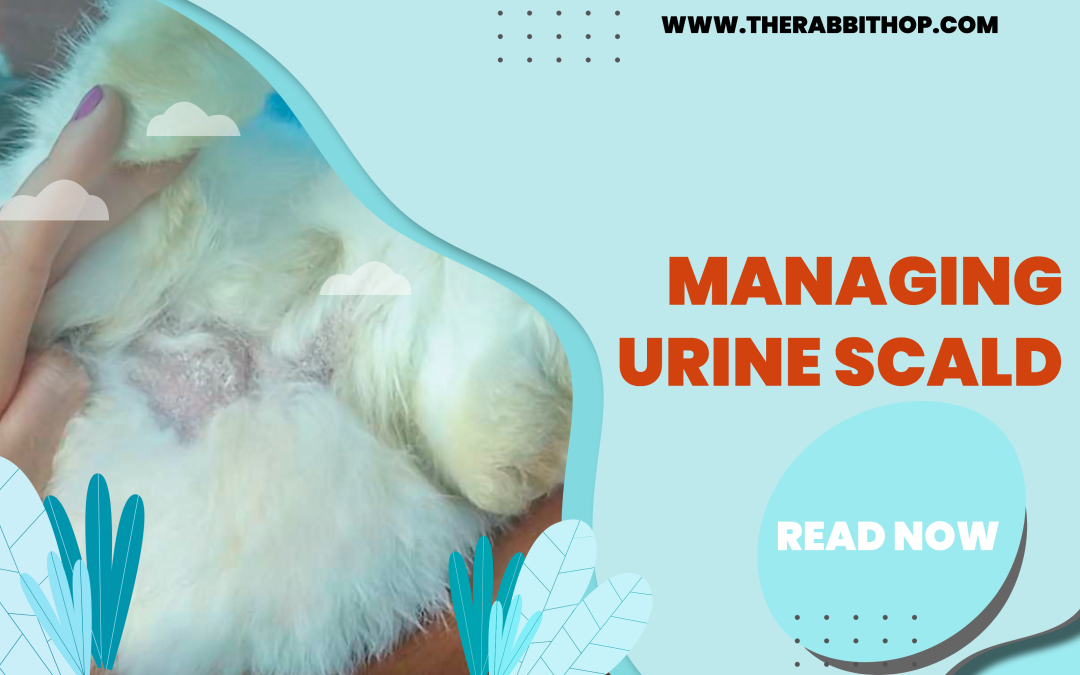Rabbit Urine scald is a painful and distressing condition that can significantly impact the quality of life of our beloved rabbits. As a responsible pet owner, it’s crucial to understand the causes, treatment options, and preventative measures to ensure your rabbit’s comfort and well-being. This guide covers everything from common causes, treatment options, and preventative measures to specialized care for disabled rabbits.
In this article, we will explore the complex nature of urine scald in rabbits and examine common causes such as arthritis, dental problems, and diet-related issues. Additionally, we will delve into the process by which rabbits develop urine scald. By understanding and managing urine scald, you can provide the best possible care for your rabbit, ensuring their happiness and health.
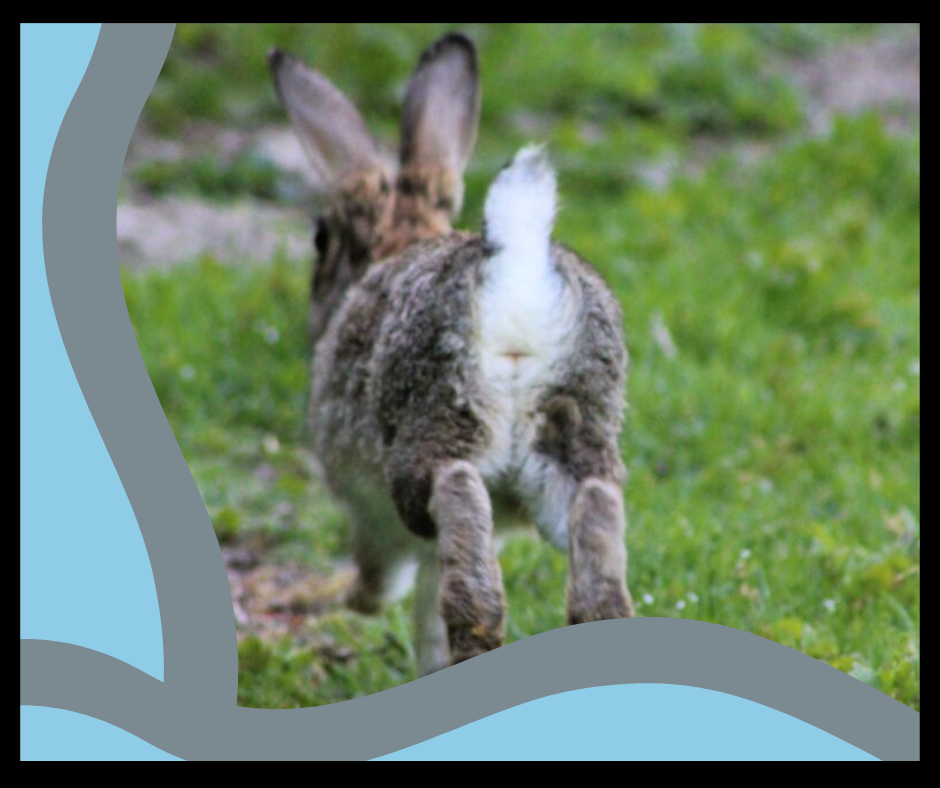
Key Takeaways
-
Urine scald is a common condition in rabbits that can be caused by underlying issues such as arthritis, dental problems, and diet-related concerns.
-
Treatment for urine scald may involve topical creams, pain relief, antibiotics, and barrier creams. Preventative measures include regular health checks & grooming routines.
-
Cleaning methods such as butt baths or dry bathing with cornstarch should also be considered to reduce the risk of skin irritation & hair loss in your pet rabbit.
Understanding Urine Scald in Rabbits

Urine scalding is a condition in rabbits where urine causes skin damage, inflammation, and hair loss due to the rabbit’s inability to clean themselves. Keep a close eye on your rabbit’s grooming habits to identify any difficulty they may encounter in maintaining cleanliness. Urinary incontinence can be a contributing factor to urine scald, as it can cause urine leakage and make it difficult for the rabbit to stay clean.
Urine scalding, also known as urine burn, can cause a variety of skin issues, such as moist dermatitis, if left untreated. Prompt treatment is necessary to prevent further complications. The skin may become dry and crack, providing a pathway for bacterial entry and skin infections.
Furthermore, the smell of urine might attract flies, which could lead to flystrike, a rapidly fatal condition. Prompt action is crucial to prevent these complications and ensure your rabbit’s well-being.
Common Causes of Urine Scald
Urine scald occurs when a rabbit is unable to groom and maintain cleanliness, often due to underlying issues such as arthritis, dental problems, diet-related concerns, and bladder sludge.
The following sections will cover these common causes and their impact on your rabbit’s health.
Arthritis and Mobility Issues
Arthritis can impede a rabbit’s mobility, thus hindering their ability to groom themselves properly and resulting in urine scald. Indications of arthritis in rabbits may include reduced jumping height, alterations in behavior, and mobility issues. These mobility issues can lead to irritated skin caused by urine scald if the rabbit is unable to groom themselves properly.
Treating or managing arthritis is possible. Meloxicam, an anti-inflammatory drug, is the most effective medication for this purpose.
Meloxicam not only reduces inflammation and provides relief from arthritis symptoms but also acts as an antibiotic and fights itching. Additionally, it helps to prevent urine scald and secures your rabbit’s comfort.
Dental Problems and Grooming Neglect
Dental issues and inadequate grooming may be responsible for urine scald in rabbits. Rabbits with overgrown teeth, dental disease, or an inadequate diet may suffer from urine scald. Signs of dental discomfort in rabbits may include:
-
Reduced appetite
-
Weight loss
-
Swelling of the jaw
-
Hypersalivation
-
Difficulty in closing the mouth
Dental issues can also affect a rabbit’s ability to groom their hind legs, increasing the risk of urine scald.
You can prevent dental problems in rabbits by providing a suitable diet and unlimited access to hay. In mild cases of malocclusion, occlusal adjustment may be employed, which consists of trimming sharp edges or overgrown teeth.
Pain relief, antibiotics, and possibly surgical intervention may be necessary for more severe cases. Applying a barrier cream can also help protect the skin from urine scald.
Diet and Digestive Concerns
Dietary habits can be linked to urinary tract issues in rabbits, which can lead to urine scald. We recommend that a rabbit’s diet consist of:
-
A minimum of 70 to 80 percent of Timothy feeding hay
-
High-quality pellets being fed sparingly
-
The remainder of the diet is comprised of rabbit-safe vegetables and greens
Excessive calcium intake in a rabbit’s diet may result in urinary tract issues.
Rabbits have a digestive system that employs hindgut fermentation. This specialized digestive tract is adapted to the rabbit’s plant-based diet.
Foods that may contribute to urinary tract problems in a rabbit’s diet include alfalfa hay, leafy greens high in calcium, and foods high in sugar and simple carbohydrates. By providing a balanced diet, you can reduce the risk of urine scald in your rabbit.
Treatment Options for Urine Scald

Treatment for urine scald, severe urine burn, and diaper rash may involve:
-
Topical cream for soothing inflamed skin
-
Pain relief
-
Antibiotics for urinary tract infection
-
Barrier creams
Maintaining proper hygiene and care is essential to prevent and avoid the risk of developing urine scald.
Depending on the severity of urine scald, various treatment options may alleviate symptoms and promote healing. It is essential to consult a veterinarian to determine the most appropriate course of action for your rabbit’s specific needs.
Besides seeking professional advice, keeping your rabbit’s living environment clean and dry is vital as a preventive measure against further complications. Washable towels or puppy pads are suitable options as they do not stick to the rabbits. Maintaining a clean and dry living area can help alleviate the discomfort from urine scald and promote a faster recovery.
Preventative Measures for Urine Scald
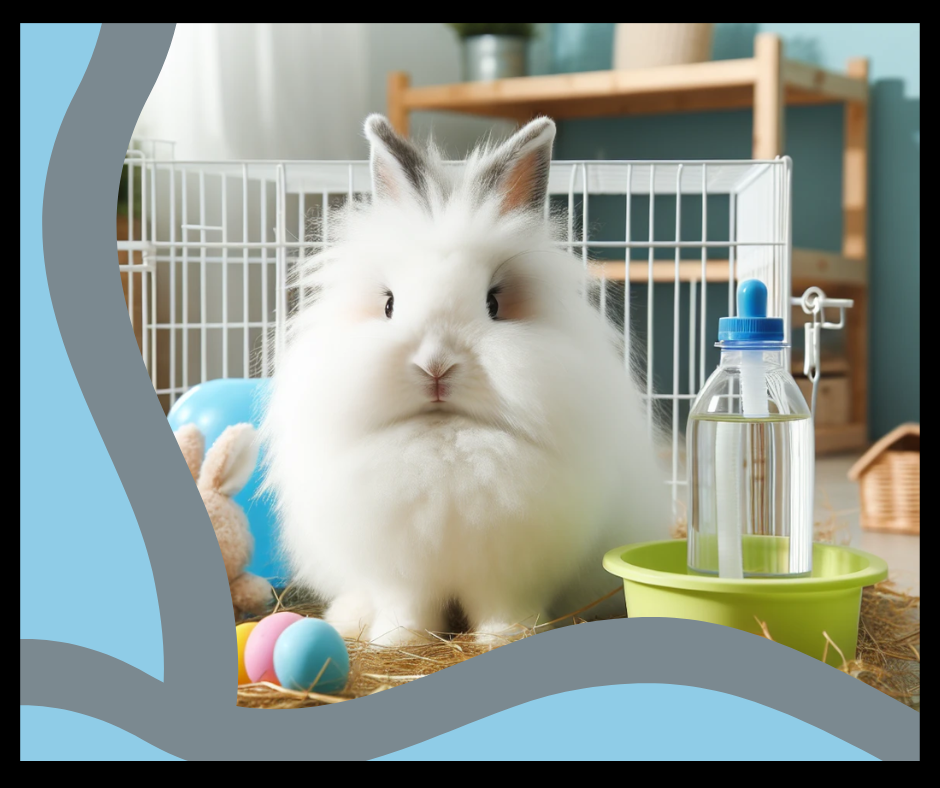
Preventing urine scald in rabbits involves a combination of regular health checks, grooming routines, litter training, and maintaining a clean enclosure.
The following sections will elaborate on these preventative measures and offer practical tips to safeguard your rabbit’s health.
Health Checks and Grooming Routines
Regular health checks are key in spotting early signs of urine scald and maintaining your rabbit’s overall health. Grooming routines, such as gently wiping the underside of the rabbit with a warm wet washcloth and focusing on the rear and nether regions a couple of times a week, can also help prevent urine scald.
Furthermore, ensuring that your rabbit is litter trained and changing the hay in their hutch daily will maintain cleanliness and minimize the risk of urine scald.
It is essential to inspect your rabbit’s fur and rabbit skin around the genital area and hindquarters for signs of redness, inflammation, or sores that may indicate urine scald or inflamed skin during grooming sessions.
If any of these signs are present, you must address the underlying cause and provide appropriate treatment. Such include applying creams like Neosporin, Sudocrem, or skin conditions bag balm to alleviate discomfort and promote healing.
Litter Training and Enclosure Maintenance
Litter training is vital in preventing urine scald in rabbits by preventing them from lying in their excreta. To effectively litter train your rabbit, follow these steps:
1. Confine them to a small area or their enclosure.
2. Place a handful of hay in each litter box.
3. Use unscented litter that is not dusty, preferably a paper-based product.
4. Ensure that the litter is a few inches deep, and put a thick layer in the litter box to help your rabbit feel comfortable using it.
Maintaining a clean enclosure is also essential in preventing urine scald. Here are some tips for keeping your rabbit’s enclosure clean:
-
Regularly remove soiled items from the enclosure.
-
Thoroughly clean the enclosure at least once every two weeks.
-
Keep the enclosure clean and dry to minimize the risk of urine scald and promote your rabbit’s overall health.
Balanced Diet and Hydration
Providing your rabbit with a balanced diet and ensuring proper hydration can help prevent urine scald. A balanced diet for rabbits should include high water-content foods such as cucumbers. This can help reduce the risk of urine scald.
Barrier creams like Vaseline or zinc oxide can also be applied to repel moisture and promote healing.
Rabbits should consume between 50 and 150 milliliters of water per kilogram of body weight daily to maintain adequate hydration. Dehydration can cause concentrated urine, which can then irritate the skin, leading to inflammation and scalding. Ensuring your rabbit receives proper hydration and a balanced diet can reduce the risk of urine scald and promote overall health.
Caring for Disabled Rabbits with Urine Scald
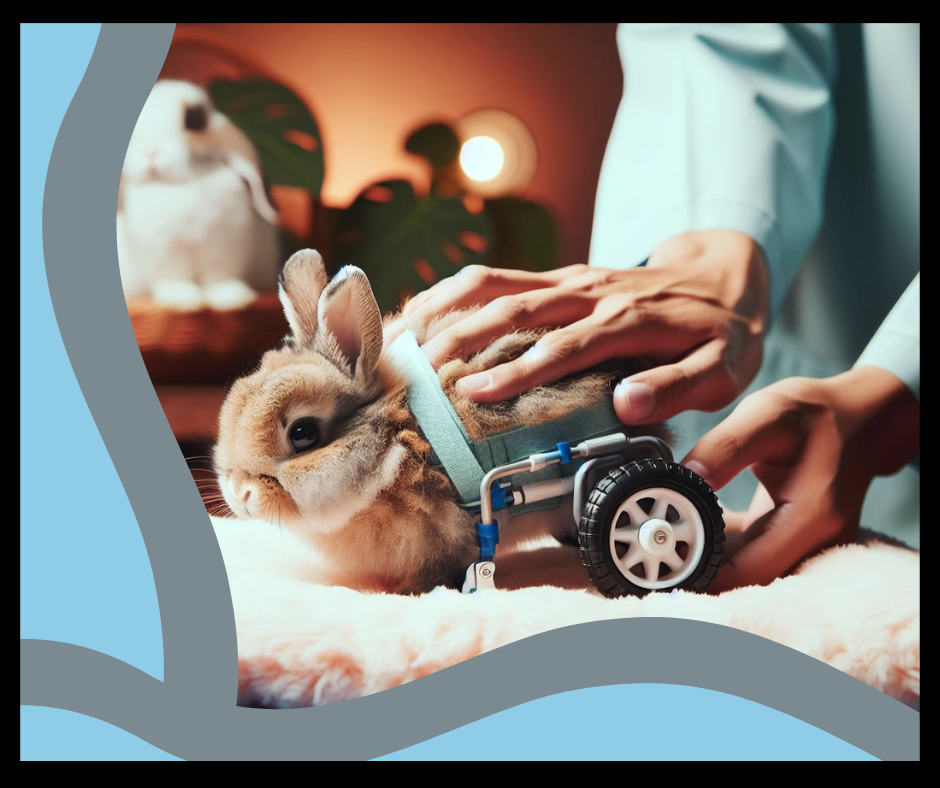
Caring for disabled rabbits with urine scald requires special considerations to minimize the risk of urine scald. Adjusting bedding materials, such as synthetic sheepskin or rubber mats, can provide a more comfortable and supportive surface for disabled rabbits.
Additionally, manually expressing the bladder can help reduce dribbling and subsequent wetness. Thus, this keeps the rabbit drier and minimizes the risk of urine scald.
Regular grooming of disabled rabbits is also essential to avoid mucky bottoms and urine scald. Consult with a rabbit-savvy veterinarian or an experienced individual for advice on clipping or providing a hygiene trim. These rabbits may require more frequent grooming to maintain cleanliness and prevent urine scald.
Providing appropriate care and support to disabled rabbits helps ensure their comfort and overall welfare.
How to Clean Your Rabbit Safely
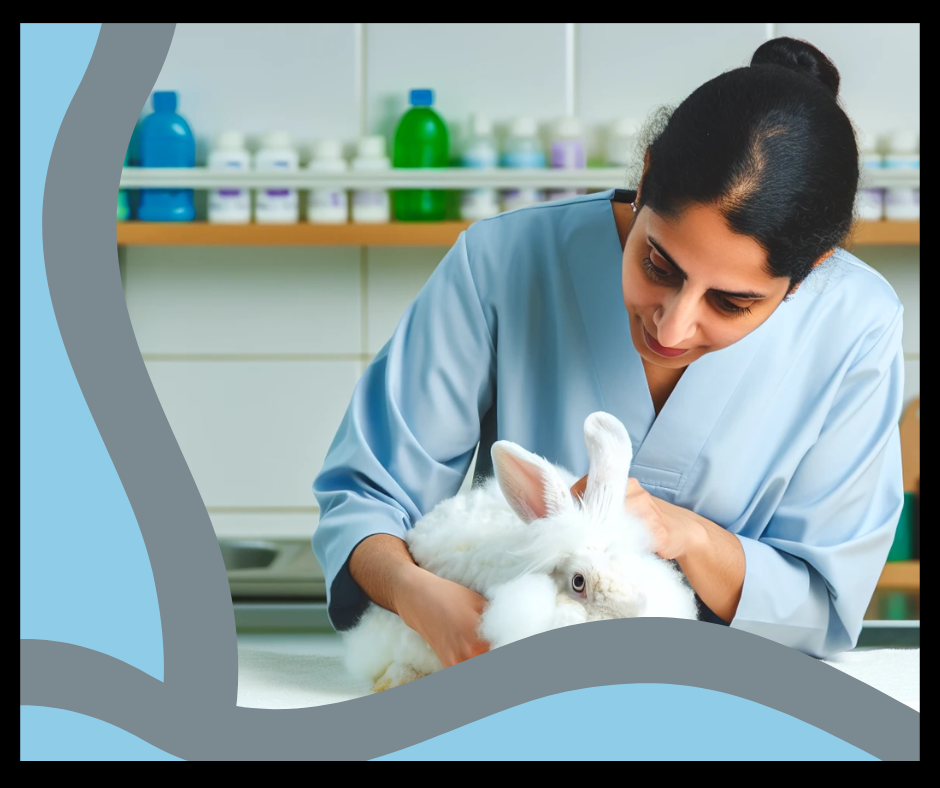
Cleaning your rabbit safely can be achieved through various methods, including gentle butt baths, pet wipes, dry bathing with cornstarch, and hair clipping for matted fur removal.
The following sections will detail these cleaning methods to help you select the most suitable approach for your rabbit.
Gentle Butt Baths and Pet Wipes
A gentle butt bath involves using a mild pet shampoo and lukewarm water to clean your rabbit’s bottom. To provide a gentle butt bath, follow these steps:
1. Place a towel on the bottom of a small sink or tub.
2. Add an inch or two of water.
3. Wet your rabbit’s bottom.
4. Apply a small amount of shampoo.
5. Rinse thoroughly.
6. After bathing, towel dry your rabbit.
7. Use a hairdryer set on cool to ensure they are completely dry before returning them to their enclosure.
Pet wipes, specifically designed for rabbits or unscented, alcohol-free baby wipes, can also be used to clean your rabbits without bathing them. These wipes can be a convenient way to spot-clean your rabbit and remove dirt and debris without causing unnecessary stress. But, it’s necessary to rinse your rabbit thoroughly after cleaning with soap to prevent irritation.
Dry Bathing with Cornstarch
Dry bathing with cornstarch is an effective alternative to wet baths for cleaning your rabbit. To dry bathe your rabbit with cornstarch, follow these steps:
1. Apply the powder to the affected areas.
2. Carefully work it into the fur and down to the skin.
3. Cornstarch helps absorb moisture and clean the fur without the use of water.
Cornstarch is gentle enough to be safe for rabbits and can help soothe their skin. It is especially useful for removing matted fur, as it absorbs dirt and grime, making it easier to brush out the fur. Always monitor your rabbit during the dry bathing process to avoid discomfort or stress.
Hair Clipping and Matted Fur Removal
Hair clipping and matted fur removal are essential practices in preventing urine scald. Regular hair clipping every three months, particularly during periods of heavy shedding, can help maintain your rabbit’s hygiene and prevent the accumulation of urine in their fur. Daily brushing is also recommended during the shedding season to remove any loose hair.
Removing matted fur can be achieved by gently brushing the mat out with a mat splitter or mat rake, being careful not to cut the delicate skin. If the mat is severe, it is advised to seek professional help from a rabbit-savvy vet or groomer, as the use of scissors can cause accidental cuts and injury.
Regularly grooming and maintaining your rabbit’s fur can prevent urine scald and ensure their comfort.
When to Consult a Vet

You should consult a veterinarian if your rabbit displays signs of urine scald or has a dirty bottom, as this might indicate an underlying issue that requires professional treatment. Severe urine scald symptoms such as:
-
anorexia
-
lethargy
-
bruxism
-
alterations in body temperature
-
atypical fecal droppings
-
hematuria
necessitate prompt veterinary care.
A veterinarian can diagnose the cause of urine scald and recommend the most appropriate treatment options for your rabbit’s specific needs. Seeking professional advice and implementing necessary preventative measures can help ensure your rabbit’s health, thereby preventing urine scald and its complications.
Summary
Understanding and managing urine scald in rabbits is crucial to responsible pet ownership. By exploring the common causes, such as arthritis, dental problems, and diet-related issues, we can implement effective treatment options and preventative measures to safeguard our rabbit’s health and comfort.
By being proactive in providing regular health checks, grooming routines, litter training, and maintaining a clean enclosure, we can minimize the risk of urine scald in our rabbits. Additionally, caring for disabled rabbits and ensuring proper hygiene through gentle cleaning methods can further protect our furry friends from discomfort and potential complications.
With the knowledge and tools provided in this guide, you can confidently care for your rabbit, ensuring their happiness and health for years to come.
Frequently Asked Questions
What causes urine scald?
Urine scald is caused by poor husbandry, urine-soaked bedding, reproductive disease, Treponema cuniculi infection, and other medical issues that can lead to an inability to control urine retention/voiding.
What is the best cream for urine scald?
We recommend Silvadene cream and Neo-predef after baths for general scalding, with a thin layer of A&D ointment over the top for added protection.
What does urine scald on a dog look like?
Urine scald in dogs is also known as urine burn due to its appearance: bright red skin resembling a sunburn that can be painful for the dog.
How do you treat urine scald on rabbits?
Treatments for urine scald in rabbits typically involve fur shaving, careful bathing, antibiotics, pain relievers, and skin care/protection such as a barrier cream. Your vet may also prescribe anti-inflammatories and Neo-predef ointment with a thin layer of A&D ointment to lock it in.
How can I prevent urine scald in my rabbit?
Regular health checks, grooming routines, litter training, and keeping a clean enclosure are key to preventing urine scald in rabbits.
Learn Rabbit Care, Tips, and Tricks!
Learn more about caring for your bunny with us. We’ve got everything from rabbit hutches to essential care tips.
For more information on rabbit care, visit our website: therabbithop.com.
Join our community and become a bunny care expert!

